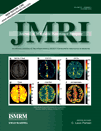Functional MRI of liver using BOLD MRI: Effect of glucose
Abstract
Purpose
To demonstrate feasibility of functional MRI of liver using glucose as a stimulus to monitor metabolic changes using blood oxygenation level dependent (BOLD) contrast. We hypothesized that during hyperglycemia, liver stores the glucose and consequently there is a reduction in oxygen consumption, which can be detected using BOLD MRI.
Materials and Methods
In four mini pigs, measurements were made before and after 54 g of glucose administered intravenously. In six healthy young human subjects, measurements were made before and after oral ingestion of 75 g of glucose. T2* weighted images of the liver were obtained on a Siemens 3 Tesla Verio MRI scanner using multiple gradient recalled echo (mGRE) sequence.
Results
A statistically significant decrease (P < 0.05) in R2* (1/T2*) was observed postglucose both in swine (110.41 ± 14.1 s−1 to 72.22 ± 5.7 s−1) and human (55.84 ±3.8 s−1 to 50.6 ±0.5 s−1), suggesting improved liver oxygenation during hyperglycemia.
Conclusion
Our preliminary data presented here demonstrate the feasibility of obtaining functional liver images that illustrate the changes in oxygen consumption. Further studies are necessary to fully validate the technique. J. Magn. Reson. Imaging 2010;32:988–991. © 2010 Wiley-Liss, Inc.




